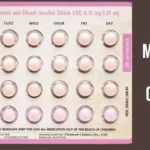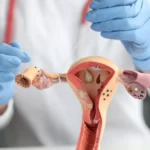
In today’s modern world, many individuals are seeking natural alternatives for various aspects of their lives, including birth control. While there are numerous contraceptive methods available on the market, some people prefer to explore natural ways to avoid pregnancy. If you’re interested in learning 8 best ways to avoid pregnancy naturally, this comprehensive guide will provide you with valuable information and insights. We’ll explore various natural birth control methods, discuss their effectiveness, and offer expert advice to ensure a safe and healthy journey.
Related: 10 Pregnancy Contraceptives
What is the Importance of Natural Birth Control?
When it comes to birth control, some individuals prefer natural methods over hormonal or invasive options. Natural birth control methods allow you to avoid the potential side effects of hormonal contraceptives and provide a more holistic approach to family planning. By understanding your body’s natural fertility signs, you can make informed decisions and take charge of your reproductive health.
How to Track Your Menstrual Cycle?
Tracking your menstrual cycle is a crucial step in natural birth control. By understanding the timing of your menstrual cycle, you can identify the fertile and infertile days. There are several methods to track your cycle effectively:
- Calendar Method: Start by recording the first day of your period for several months to establish an average cycle length. Subtract 18 days from the shortest cycle and 11 days from the longest cycle to determine your fertile window.
- Basal Body Temperature (BBT) Method: Measure your body temperature every morning before getting out of bed. A slight rise in temperature indicates ovulation has occurred, marking the beginning of the fertile phase.
- Cervical Mucus Method: Observe changes in your vaginal discharge throughout the cycle. As you approach ovulation, the cervical mucus becomes clear, slippery, and stretchy—signifying increased fertility.
- Symptothermal Method: Combining the BBT and cervical mucus methods enhances accuracy. By analyzing both indicators, you can pinpoint the fertile days with greater certainty.
8 Best Ways To Avoid Pregnancy Naturally
While it’s important to note that no method is 100% effective, there are natural methods that can help reduce the risk of pregnancy. Here are 8 best ways to avoid pregnancy naturally:
The Symptothermal Method: Combining Basal Body Temperature and Cervical Mucus
The Symptothermal Method is a powerful natural birth control technique that combines the observation of basal body temperature (BBT) and cervical mucus changes. By tracking these two key indicators, you can identify your fertile and infertile days more accurately.
- Basal Body Temperature (BBT): Measure your body temperature every morning before getting out of bed using a basal thermometer. Record your temperature and look for a sustained increase of around 0.5 to 1 degree Fahrenheit after ovulation. This temperature rise indicates the end of the fertile phase.
- Cervical Mucus: Monitor your cervical mucus throughout the menstrual cycle. Initially, after menstruation, the mucus may be minimal and sticky. As you approach ovulation, it becomes clear, slippery, and stretchy—resembling raw egg whites. Once the mucus returns to a thicker, cloudy, and less stretchy consistency, it suggests the end of the fertile phase.
Cervical Mucus Method: Observing Changes in Vaginal Discharge
The Cervical Mucus Method, also known as the Ovulation Method, focuses on observing changes in your vaginal discharge to determine fertility. By monitoring the characteristics of your cervical mucus, you can identify the optimal time to engage in or avoid intercourse.
- Menstruation Phase: During menstruation, you may experience bleeding and a decrease in cervical mucus. This phase is typically considered infertile.
- Dry Phase: After menstruation, you may experience a few dry days with minimal discharge.
- Sticky Phase: As estrogen levels rise, you may notice sticky or tacky cervical mucus that is white or creamy in color. This type of mucus indicates a low chance of fertility.
- Wet Phase: Approaching ovulation, the cervical mucus becomes more abundant, slippery, and watery. This type of mucus facilitates sperm movement and indicates increased fertility.
- Egg White Phase: This phase signifies the peak of fertility. The cervical mucus becomes clear, stretchy, and resembles raw egg whites—allowing sperm to travel easily through the cervix.
- Watery Phase: After the egg white phase, you may experience a more watery consistency of cervical mucus. It may be abundant, clear, and lubricative. This phase is also considered fertile.
- Post-Ovulation Phase: Following ovulation, the cervical mucus gradually decreases in quantity and returns to a sticky or dry state. This indicates the end of the fertile period.
Calendar Method: Predicting Fertile and Infertile Days
The Calendar Method, also known as the Rhythm Method, is a natural birth control technique that relies on tracking your menstrual cycle to predict fertile and infertile days. It is based on the assumption that ovulation occurs around the same time each month.
To use the Calendar Method effectively:
- Track your menstrual cycles: Record the start and end dates of your menstrual periods for several months to establish a pattern. Note the shortest and longest cycle lengths.
- Determine the fertile window: Subtract 18 days from the length of your shortest cycle and 11 days from the length of your longest cycle. These numbers represent the estimated start and end of your fertile window.
- Identify fertile and infertile days: Mark the days on your calendar to distinguish between fertile and infertile days. During the fertile window, it’s important to either abstain from intercourse or use alternative birth control methods.
Withdrawal Method: Coitus Interruptus
The Withdrawal Method, also known as Coitus Interruptus or the “pull-out” method, involves the man withdrawing his penis from the vagina before ejaculation. While this method is readily available and doesn’t require any external tools or substances, it is considered one of the least effective forms of birth control.
The main drawback of the Withdrawal Method is its high failure rate due to the potential presence of pre-ejaculate fluid that can contain sperm. Additionally, it requires a great deal of self-control and communication between partners.
If you choose to rely on the Withdrawal Method, it’s essential to understand its limitations and consider using additional contraceptive methods to increase effectiveness and prevent unintended pregnancies.
Barrier Methods: Natural Alternatives
Barrier methods are traditional forms of contraception that physically prevent sperm from reaching the uterus. While they are not entirely natural, there are some natural alternatives worth considering:
- Male Condoms: Made from latex or polyurethane, male condoms are highly effective in preventing pregnancy and protecting against sexually transmitted infections (STIs). Choose brands that are free from harmful chemicals and prioritize sustainability.
- Female Condoms: Female condoms are worn inside the vagina and provide similar protection as male condoms. They are a good alternative for individuals with latex allergies.
- Cervical Caps: Cervical caps are small, flexible cups made of latex or silicone that fit over the cervix. They act as a barrier, preventing sperm from entering the uterus. It’s important to consult a healthcare professional for proper fitting and instructions.
- Diaphragms: Diaphragms are similar to cervical caps but larger and made of latex or silicone. They are inserted into the vagina to cover the cervix and block sperm. Like cervical caps, they require fitting and guidance from a healthcare professional.
Breastfeeding as a Natural Birth Control Method
Breastfeeding, when done exclusively and on demand, can act as a natural form of birth control. This method, known as the Lactational Amenorrhea Method (LAM), relies on the hormonal changes that occur during breastfeeding to suppress ovulation.
To use breastfeeding as a natural birth control method effectively:
- Exclusive breastfeeding: Breastfeed your baby exclusively, without using any other sources of nutrition, for the first six months. This means feeding your baby on demand, day and night, and avoiding the use of pacifiers or supplementary feeding.
- Breastfeed frequently: Breastfeed your baby at least every four hours during the day and every six hours at night. The more often you breastfeed, the more likely it is to suppress ovulation.
- Avoid bottle feeding and pacifiers: Using bottles or pacifiers can interfere with the hormonal mechanisms that suppress ovulation. It’s important to exclusively breastfeed directly from the breast to maximize the effectiveness of this method.
Abstinence: No to Sexual Intercourse
Abstinence is indeed a method of avoiding pregnancy naturally. It involves refraining from any sexual activity that could lead to pregnancy. By abstaining from sexual intercourse, the chances of becoming pregnant are effectively eliminated.
Abstinence is considered a highly effective form of contraception because it has a 100% success rate when practiced consistently and correctly. Unlike other contraceptive methods such as condoms or birth control pills, abstinence does not rely on external factors or devices, making it a reliable option for those who wish to avoid pregnancy without using any form of contraception.
It’s important to note that abstinence requires mutual agreement and commitment from both partners. It involves avoiding any form of sexual contact that involves the introduction of sperm into the vagina. This includes not only vaginal intercourse but also activities like anal sex or using fingers or objects that may carry sperm.
While abstinence is an effective method of preventing pregnancy, it does not protect against sexually transmitted infections (STIs). If you choose to engage in sexual activity after practicing abstinence, it is essential to use appropriate protection, such as condoms, to reduce the risk of STIs.
Healthy Lifestyle Choices for Natural Birth Control
In addition to specific natural birth control methods, adopting a healthy lifestyle can enhance their effectiveness and promote overall reproductive health. Consider the following practices:
- Maintain a balanced diet: Consuming a nutritious diet rich in fruits, vegetables, whole grains, and lean proteins supports hormonal balance and reproductive health.
- Exercise regularly: Engaging in regular physical activity helps regulate hormone levels, reduce stress, and support overall well-being. Find activities you enjoy and incorporate them into your daily routine.
- Manage stress: Chronic stress can disrupt hormonal balance and interfere with reproductive health. Explore stress-management techniques such as meditation, yoga, deep breathing exercises, or engaging in hobbies you enjoy.
- Avoid smoking and excessive alcohol consumption: Smoking and excessive alcohol intake can negatively impact fertility and overall reproductive health. It’s best to avoid these habits or seek support if you need assistance in quitting.
- Prioritize sleep: Aim for adequate and quality sleep to support hormonal balance and overall well-being. Create a sleep routine, ensure a comfortable sleep environment, and practice relaxation techniques before bed.
How to Find a Specialist Natural Family Planning Teacher?
If you are interested in learning natural family planning methods, you may want to find a specialist natural family planning teacher. Here are some ways to find a specialist natural family planning teacher:
- Institute for Natural Family Planning Training Program for Healthcare Professionals: Marquette University offers a teacher training course for healthcare professionals to develop and provide a sustainable NFP.
- Directory of NFP Teacher Training Programs: The United States Conference of Catholic Bishops provides a directory of NFP teacher training programs in the United States. NFP methods are identified and basic service information is included in the descriptions.
- NFP National Providers: The United States Conference of Catholic Bishops provides a list of national and regional NFP education programs that provide training in the evidence-based methods of NFP. The specific method of each provider is identified and basic service information is included in the descriptions.
- Natural Womanhood: Natural Womanhood provides a search tool to find a fertility awareness class or instructor. The website also provides a brief description of the most reliable methods of fertility awareness.
- Heritage PFHC NFP: Heritage PFHC NFP provides client and teacher education in the Cross-Check Method (also called “STM”), a multi-indexed method of NFP.
- Couple to Couple League International: Couple to Couple League International provides fertility awareness and NFP training, engaged NFP classes, pre-cana, FABM method, Sympto-thermal method, and natural family planning.
How much does it cost to take a Natural Family Planning Course?
The cost of taking a natural family planning course varies depending on the provider and the method of instruction. Here are some examples of the cost of taking a natural family planning course:
- Couple to Couple League: The Couple to Couple League offers a variety of natural family planning classes, including online and in-person classes. The cost of the class is $85, and the class manual can be added during the registration process.
- Natural Womanhood: Natural Womanhood provides a search tool to find a fertility awareness class or instructor. The cost of the class varies depending on the provider and the method of instruction.
- Catholic Natural Family Planning: The Couple to Couple League is one of the premier organizations for teaching Catholic natural family planning. They provide a directory of trained NFP instructors around the world. They can also provide you with a home study course if there are no courses near you. The cost of the class varies depending on the provider and the method of instruction.
- Institute for Natural Family Planning Training Program for Healthcare Professionals: Marquette University offers a teacher training course for healthcare professionals to develop and provide a sustainable NFP. The cost of the course is not provided on the website.
It is important to note that some providers offer free training for volunteers or healthcare professionals. Additionally, some insurance plans may cover the cost of natural family planning classes, so it is recommended to check with the insurance provider.
Conclusion
Choosing the best ways to avoid pregnancy naturally is a personal and empowering decision. By understanding your menstrual cycle, tracking fertility indicators, and adopting healthy lifestyle practices, you can take charge of your reproductive health. However, it’s crucial to remember that natural birth control methods may not be suitable for everyone and have limitations in terms of effectiveness. Consulting with a healthcare professional can provide personalized guidance and ensure you make informed decisions regarding your contraception needs. Explore the 8 best ways to avoid pregnancy naturally and find the method that works best for you.
Related: Marlissa Birth Control: An In-Depth Review of a Popular Contraceptive Option
Frequently Asked Questions (FAQs)
Can natural birth control methods guarantee 100% effectiveness?
No, natural birth control methods cannot guarantee 100% effectiveness in preventing pregnancy. While they can be highly effective when used correctly, there is still a risk of pregnancy. It’s important to understand the limitations of each method and consider using additional forms of contraception if desired.
Are natural birth control methods suitable for everyone?
Natural birth control methods may not be suitable for everyone. Factors such as irregular menstrual cycles, underlying health conditions, or lifestyle factors can affect the reliability and effectiveness of these methods. It’s recommended to consult with a healthcare professional to determine the most appropriate birth control options for your individual circumstances.
Do natural birth control methods protect against sexually transmitted infections (STIs)?
No, natural birth control methods do not provide protection against sexually transmitted infections (STIs). If STI prevention is a concern, it’s essential to use barrier methods such as condoms, which offer dual protection against pregnancy and STIs.
Can I combine different natural birth control methods for increased effectiveness?
Yes, combining different natural birth control methods can enhance effectiveness. For example, using the Symptothermal Method alongside tracking your menstrual cycle can provide a more comprehensive understanding of your fertility. However, it’s important to use each method correctly and consistently to ensure accuracy.
Is it possible to get pregnant during my menstrual period?
While the chances of getting pregnant during your menstrual period are low, it is not impossible. Sperm can survive in the body for up to five days, so if you have a short menstrual cycle and ovulate early, there is a possibility of fertilization occurring. It’s always advisable to use contraception or natural birth control methods even during your period to minimize the risk of pregnancy.
Can stress affect the effectiveness of natural birth control methods?
Yes, stress can potentially impact the effectiveness of natural birth control methods. Chronic stress can disrupt hormone levels and menstrual cycles, making it more challenging to accurately predict fertile and infertile days. It’s important to manage stress through relaxation techniques, exercise, and self-care to support the effectiveness of natural birth control methods.
References
- Medical News Today. (2022). Natural birth control methods and what to know about them. https://www.medicalnewstoday.com/articles/natural-birth-control
- ACOG. (2019). Fertility Awareness-Based Methods of Family Planning. https://www.acog.org/womens-health/faqs/fertility-awareness-based-methods-of-family-planning
- KFF. (2018). Natural Family Planning as a Means of Preventing Pregnancy. https://www.kff.org/womens-health-policy/fact-sheet/natural-family-planning-as-a-means-of-preventing-pregnancy/
- Natural Cycles. (2019). 12 Non-Hormonal Birth Control Methods and How They Work. https://www.naturalcycles.com/cyclematters/non-hormonal-birth-control-methods
- CDC. (2019). Fertility Awareness–Based Methods – USMEC. https://www.cdc.gov/reproductivehealth/contraception/mmwr/mec/appendixf.html
- WebMD. (2022). Natural Birth Control: Rhythm Method, Family Planning, and More. https://www.webmd.com/sex/birth-control/natural-birth-control
- Planned Parenthood. (2023). Fertility Awareness Methods | Natural Birth Control. https://www.plannedparenthood.org/learn/birth-control/fertility-awareness
- Options for Sexual Health. (2019). Fertility Awareness Method. https://www.optionsforsexualhealth.org/facts/birth-control/methods/fertility-awareness-method/
- Pristyn Care. (2020). How to avoid pregnancy after sex naturally? https://www.pristyncare.com/blog/how-to-avoid-pregnancy-after-sex-naturally-pc0101/
- NHS inform. (2022). Natural family planning (fertility awareness). https://www.nhsinform.scot/healthy-living/contraception/natural-family-planning-fertility-awareness
- Healthline. (2022). Birth Control: Rhythm Method or Fertility Awareness. https://www.healthline.com/health/birth-control-rhythm-method
- Medical News Today. (2020). 15 ways to prevent pregnancy. https://www.medicalnewstoday.com/articles/321558
- Verywell Health. (2021). Natural Birth Control Methods. https://www.verywellhealth.com/natural-birth-control-methods-906798
- American Pregnancy Association. (2020). Natural Family Planning: Fertility Awareness Method. https://americanpregnancy.org/getting-pregnant/natural-family-planning/












